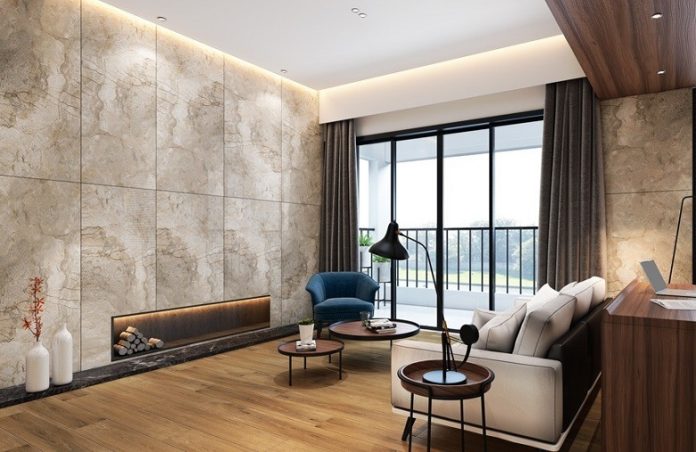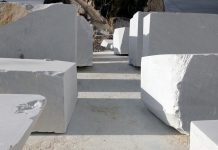Primavera marble is the commercial name of a compact (pure) calcareous marble of beige, brown, or pinkish color. Also known as “Breccia Primavera” this kind of lithotype is extracted in the quarries of Nuvolera, in the province of Brescia, next to Monte Bolle.
Geology and History of Primavera Marble
The Primavera marble quarries are part of the wide extractive basin known as Comprensorio del Botticino, which develops in East Brescia: this area has been exploited for over two thousand years. The Monte Bolle quarries, in fact, are part of the limestone deposit that formed in the Jurassic and Cretaceous eras, between 190 and 70 million years ago, when sedimentation, cementation, and recrystallization of limestone muds in an “inland sea” from Mesozoic age.
In the past centuries, starting from the Roman and Longobard times, the huge amount of marble located in the area has favored the development of a consistent epigraphic tradition, besides the development of the extraction and processing of the marble activities. As of today, Primavera marble is exclusively extracted in the Bolla quarry, which surfaces at the feet of the namesake mount.
The intensive extraction of Primavera marble has grown over the course of the 20th century, alongside the technological developments, which allowed to substitute manual work with machines, with huge improvements in productivity and safety in the workplace.
Alongside the growth in production, the popularity of this marble grew as well, which is hugely exported today and has become popular all over the world.
Technical datas
The uniqueness and advantage of this kind of marble also come from its characteristic pink color, together with its peculiar veins. From a petrographic point of view, Primavera marble is characterized by low absorption and porosity levels, but also extreme compactness, which was also better than the one of the Botticino marble, extracted in the nearby quarries. The exceptional structural properties, from flexion to usage, make this marble perfectly fit also for outdoor applications.
Commercial Varieties
Primavera marble is commercially distinguished in three sub-categories, each one with unique chromatic characteristics:
- Primavera Venata marble: this variety is obtained by the cutting of the blocks in the direction of veins and is characterized by a dark-brownish beige color; right because of the presence of its numerous veins, this marble is sometimes also called “Breccia Primavera”. The brown-colored background is often enriched by white and green nuances;
- Rosata Primavera marble: characterized by a slightly pinkish light-beige color, this variety has optimal properties of hardness and compactness. It’s a variety of marble that’s often used while matched with other marbled with more vivid or darker colors;
- Primavera Viva marble: this lithotype is located halfway between the two antecedent types because its veins remind those of Primavera Venata, but it has a background color that’s more intense and vivid, from which the name “Viva” takes its origin. Its unique coloration allows architects to use it for a wide variety of applications.
Source: www.marmomac.com









































